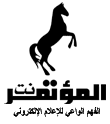ADDIS ABABA (Reuters) - - Ethiopian scientists unveiled on Wednesday a 3.3 million-year-old fossil of a girl, which they believe is the most complete skeleton ever found.
The fossil including an entire skull, torso, shoulder blade and various limbs was discovered at Dikaka, some 400 kms northeast of the capital Addis Ababa near the Awash river in the Rift Valley.
"The finding is the most complete hominid skeleton ever found in the world," Zeresenay Alemseged, head of the Paleoanthropological Research Team, told a news conference.
He said the fossil was older than the 3.2 million year old remains of "Lucy" discovered in 1974, and described by scientists as one of the world's greatest archaeological finds.
"The new bones belong to a three year old girl who lived 3.3 million years ago � 150,000 years before Lucy," Zeresenay said.
"Evidence indicates that she probably died in a flood from the nearby Awash river," he added.
The fossil has been named "Selam," which means peace in Ethiopia's official Amharic language.
Zeresenay said she belonged to the Australopithecus afarnesis species, which includes Lucy, and is thought to be an ancestor to modern humans.
"We now have for the first time the hard evidence for a clear picture of what early child human ancestors looked like," he added.
Over the last 50 years, Ethiopia has been a hotbed for archaeological discoveries.
The discovery of Lucy � an almost complete hominid skeleton � was a landmark in the search for the origins of humanity.
While a hominid skull thought to be between 200,000-500,000 years old was found in January, in a discovery one scientist said could fill the gap in the search for the origins of the human race.
On the shores of what was formerly a lake in 1967, two Homo sapiens skulls dating back 195,000 years were unearthed. The find pushed back the known date of mankind, suggesting that modern man and his older precursor existed side by side.
|

